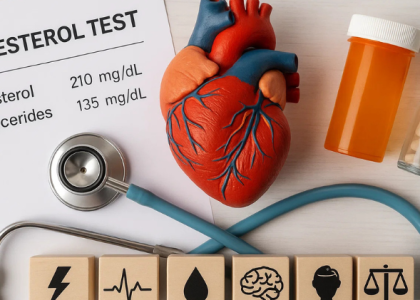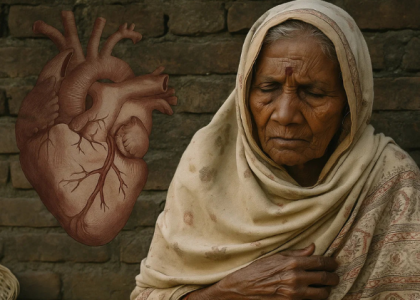Old Ingredients, New Questions
In millions of South Asian kitchens, ghee and coconut oil are sacred. From frying dosas to making tadka, they’re part of tradition — and flavor. Grandmothers swore by them, and Ayurveda often praises them.
But in a world where heart attacks are hitting younger South Asians, many are now asking:
Are ghee and coconut oil helping our hearts — or silently harming them?
Let’s break it down with cultural respect, science-backed facts, and practical tips for daily cooking.
What Are Ghee and Coconut Oil, Really?
Ghee is clarified butter — butter simmered to remove milk solids and water, leaving behind pure fat. It has a high smoke point and rich flavor.
Coconut oil is extracted from coconut flesh. In Kerala and other parts of South India, it’s the go-to oil for curries and frying.
Both are saturated fats, meaning they’re solid or semi-solid at room temperature.
And that’s where the controversy begins.
The Heart Health Debate: What the Science Says
The Old View: All Saturated Fat Is Bad
For decades, guidelines warned against saturated fat, linking it to:
- Higher LDL cholesterol
- Increased risk of heart disease
This led to fear around butter, coconut oil, and ghee — and a rush toward vegetable oils.
The Newer View: Not All Fats Act the Same
Recent studies show it’s more nuanced:
- Ghee contains butyrate and conjugated linoleic acid (CLA), which may help reduce inflammation.
- Coconut oil raises HDL (good cholesterol), though it may also raise LDL.
- The overall diet pattern matters more than one ingredient.
That said, excessive use of either fat — especially in fried foods — still carries risks.
Why This Matters More for South Asians
South Asians often:
- Have higher genetic risk for cholesterol problems
- Develop heart disease at younger ages
- Store visceral (belly) fat more easily
- Eat high-carb + high-fat combinations (e.g., ghee on rice, coconut oil with dosa)
This combo — refined carbs + saturated fats — may lead to worse metabolic outcomes than fats alone.
So while ghee and coconut oil aren’t villains, context matters.
How Much Is Too Much?
The World Health Organization (WHO) suggests less than 10% of daily calories should come from saturated fat. For most adults, that’s about 2 tablespoons or less per day.
If you’re using:
- 1 tsp ghee to finish dal → reasonable
- 3 tbsp coconut oil to deep fry → high saturated fat load
Tip: Use a measuring spoon — many people pour much more than they realize.
Ghee and Coconut Oil: When They Can Be Good
In small amounts for:
- Tempering (tadka)
- Flavor enhancement
- Light sautéing
- Making chapatis softer
Ghee and coconut oil are heat-stable, meaning they don’t easily form harmful compounds when heated — unlike some vegetable oils.
But avoid for:
- Deep frying
- Large daily quantities
- Mixing with high-carb or high-sugar meals (e.g., ghee-soaked halwa, coconut-oil-fried banana fritters)
Smart Ways to Balance Tradition and Heart Health
You don’t need to throw away your ghee tin. Just rethink how and how often you use it:
1. Use Ghee Like a Spice
- Add 1 tsp at the end of cooking for flavor, not frying
- Mix with lentils, not sweets or white rice
2. Rotate Cooking Oils
- Use different oils for different meals:
- Coconut oil for Keralite dishes occasionally
- Mustard oil for pickles
- Olive oil or avocado oil for stir-frying vegetables
This reduces your saturated fat intake without losing flavor.
3. Read Labels on “Healthy Snacks”
Packaged Indian snacks labeled “natural” often use palm oil (a cheap, heavily saturated fat). It may be worse than ghee. Avoid snacks with:
- Palmolein
- Hydrogenated oils
- “Vanaspati” (Indian shortening)
Bonus: Get a Cholesterol Test That Looks Deeper
Ask your doctor for:
- ApoB test – more accurate than just LDL
- Lipoprotein(a) – a genetic marker common in South Asians
- Triglycerides & HDL ratio – helpful to evaluate fat processing
Even with normal weight, high saturated fat intake may harm South Asians differently.
Final Thought
Ghee and coconut oil aren’t inherently “bad” — they’re traditional fats with deep cultural roots. But for South Asians facing a rising epidemic of heart disease, how you use them matters more than whether you use them.
Keep the taste. Honor tradition. But do it mindfully — not mindlessly.
One teaspoon at the right time can be a flavor booster. Four tablespoons a day, especially with rice and sweets, could be a silent threat.
Make small adjustments now — and your heart will thank you later.




